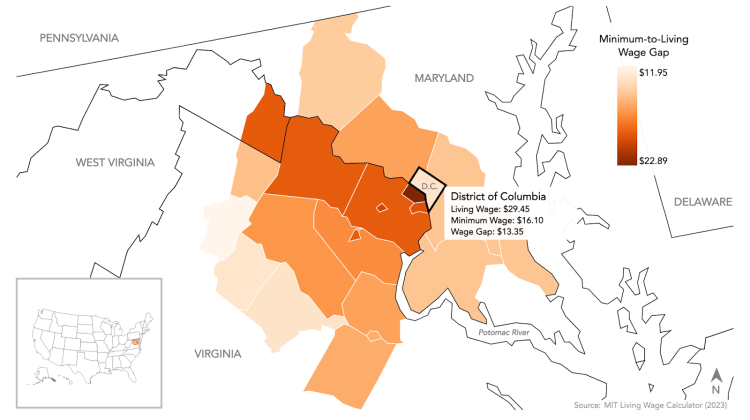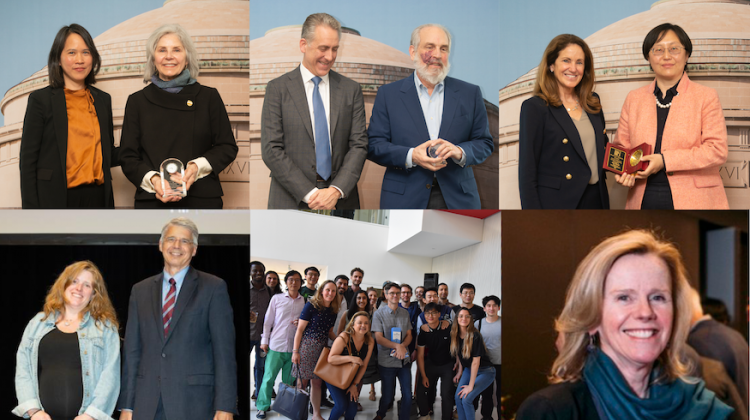Amy Glasmeier
Amy Glasmeier is a professor of economic geography and Regional Planning at DUSP. She is a staff member of LRISA, the lab on regional innovation and spatial analysis. Glasmeier is also a Founding Editor of the Cambridge Journal of Regions, Economy, and Society, which publishes multidisciplinary, international research on the spatial dimensions of contemporary socio-economic-political change.
Glasmeier's research focuses on economic opportunities for communities and individuals by investigating the role of geographic access and the effect of locational accidents on human development. In 2018, she was a co-lead on a grant from the National Science Foundation for Collaborative Research on Understanding the benefits and mitigating the risks of interdependence in critical infrastructure systems. Currently, partnering with Ms. Teresa Lynch, economic development and data innovation scientist, and Principal of Masseconomics, Cambridge, Massachusetts, Glasmeier is co-launching a two-year study of Industry Agglomeration and Innovation-Driven Economic Growth: A Framework for Data, Metrics, and Evaluation, funded by the NSF Technology, Innovation, and Partnerships (TIP). The NSF-TIP provides EAGER funding to support exploratory work in its early stages on untested but potentially transformative research ideas or approaches. Glasmeier and Lynch are pioneering the analysis of the geographies of investment in current federal programs and policies, including the National Science Foundation’s Regional Innovation Engines (“NSF Engines, the American Rescue Plan Act (2021), the Infrastructure Investment and Jobs Act (2021), the CHIPS and Science Act (2022), and the Inflation Reduction Act (2022). These programs aim to bring dynamic, innovation-based, higher-wage industries to economically underperforming and lagging technology regions. The catalytic funds accelerate future innovation-based economic growth in lagging regions by identifying the relationship between the technology capabilities of lead firms and proximate yet potentially under-utilized innovative capacity. The goal is to shrink interregional employment and income growth differentials by reducing income inequality (Muro and You, 2023). Evidence suggests the path from initial idea to scaled, sustained innovation-driven regional economic growth is multi-phased, moving from development through the nascent, emergent, growth, and mature phases (NSF, 2022). This proposal develops data and analytics to help stakeholders conceptualize and track outcomes that inform strategy in the emergent and, especially, growth phases. We plan to create high-quality industry aggregation measures, reflecting the result of countless private-sector decisions around location and expansion (where to launch, expand, and grow). These dynamics are impossible to ascertain using information on only one regional or state economy. Still, profiles of agglomeration that capture activity across all regional economies will be valuable to any local policymaker or practitioner pursuing innovation-driven economic growth.
Her other project, "Goodbye American Dream," traces the ideology of opportunity that undergirds America's relationship with people with low incomes. Through analysis of census data, popular media, and personal narratives, Glasmeier explores the contradictions in the most sacred of constructs by demonstrating the ephemeral nature of economic opportunity encumbered by locational accidents, institutional inertia, and the unintended consequences of public policy. The work builds off her long-running Living Wage Calculator, which analyzes the minimum income required for individuals and families to pay for basic living expenses. Recent press includes an interview on MIT Spectrum.
Glasmeier holds a professional Master’s and PhD in Regional Planning from UC Berkeley and currently serves as Vice Chair of the Planning Board Member in the Town of Cohasset.









